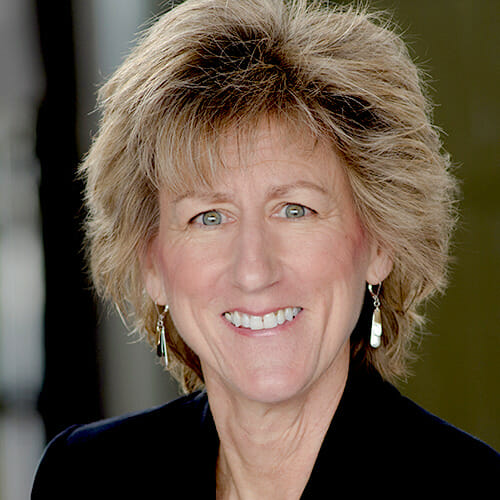
The COVID-19 pandemic has challenged every industry to bend and adapt to a new normal. For the senior living industry, it revealed that we can adapt in extraordinary ways, but the greater lesson is that it has illuminated long-standing and prevalent issues that previously had remained under the radar to operators.
Such issues include loneliness and social isolation. Never have those been so acute as when we had to take precautionary measures that went as far as restricting visitors. Despite all odds, our industry rose to the challenge, connecting residents and loved ones in impressive ways.
Of those ways, video calls have gained tremendous traction during the pandemic and have been of greatest value. When our communities start to open, visitation rules begin to relax, and families and friends can get together again, will we keep in place these video chat calls that have been embraced? We must. And here are three reasons why.
More opportunity for regular, meaningful social touchpoints
We know how critical it is to keep residents and their loved ones connected. Video calls never will take the place of in-person visits, but they can strengthen connections in the time in between, even when precautionary measures are lifted.
We long have believed that phone calls suffice, but given the sheer looks of joy on our residents’ faces when they connect by video with family for the first time, we now have seen with our own eyes what the literature has pointed out to us: video chatting works better at maintaining social bonds and decreasing social isolation and loneliness than any other technology solution.
The added benefit of video is that, by seeing faces on screen, both residents and their loved ones can feel more assured that the other is looking and doing well. Evidence has shown that this real-time, visual communication enables the parties to meaningfully interact and is much more engaging than talking on the phone, reducing the perceived social and psychological distance. Whether or not precautionary isolation will need to be prolonged or reinstated at times going forward, the value of this simple visual touchpoint cannot be overstated for keeping worry, loneliness and, most importantly, depression at bay.
As we’ve all experienced during the pandemic, standing scheduled touchpoints with family and friends create a sense of social routine and an essential human connection, something that’s great for all of us, but especially for older adults’ social needs and mental health. A recent study in the American Journal of Geriatric Psychiatry concluded that older adults who use video chat have a lower risk of developing depression, a serious condition with many other negative ramifications that senior living operators continually are trying to prevent or mitigate for their residents.
Additionally, video calls are a boon for family members near and far, providing equal access to meaningful visits with children and grandchildren who might live further away and do not have the opportunity to visit. Although a key barrier to video calls has been that senior living communities have not always had the right technology to enable these on-demand, we are seeing that change, thanks to the pandemic. Let’s keep that momentum moving in the right direction.
Control in residents’ hands
I keep saying “on-demand” video visits because a key part of this effort should be the ability to empower residents. For those in assisted living especially, residents often feel loss of control over their lifestyle or ability to attend to some aspect of the activities of daily living that they used to manage independently. But if a resident can use a simple device, such as a touchscreen tablet, and access an application that makes video calling easy when they feel like making a call, that helps reinstate their independence in a very meaningful way. Access to video chat is essential for these residents, and the process must be similar to calling on a telephone, meaning that they are connected by simply entering a phone number or tapping the name and picture of a contact.
And let’s not forget the value to the staff. We recently spoke with a leader in a senior living community who said that families are asking whether they can continue to provide video chatting capabilities even after visitation restrictions are lifted. Laughing, the leader shared with us a resounding “No!”
We understand her sentiment, having heard many stories of community staff members doing daily gymnastics to connect families — downloading apps and following multiple steps to make the connection. Going forward, communities seeing the value for their residents will continue to make video chat accessible and easy for each resident and staff members as well, especially to support those residents who have cognitive decline and require some staff assistance to get started.
Telehealth for provider appointments
The Centers for Medicare & Medicaid Services has relaxed telehealth restrictions during the health crisis, allowing senior living and care communities to use video calls to facilitate telehealth appointments. Residents can keep scheduled appointments for everything from primary care to mental health, nutrition and therapy, as video visits in lieu of in-person visits. Why isn’t this the industry standard? With the increased demand for telehealth during the pandemic, industry experts are saying we are at a turning point for telehealth; there is no going back.
Even once it is declared safe for older adults to go into a doctor’s office, will we want to risk that journey for them if a telehealth appointment would work just as well? Telehealth is safe and convenient, and research shows that it can be just as effective as an in-person visit. Although we will have to see how easy CMS makes it to access telehealth after the pandemic, it’s a safe bet to say that providing safer access to healthcare providers is something residents and families now will expect communities to provide.
I am encouraged that, coming out of the initial crisis of the COVID-19 pandemic, I’m hearing from a great number of our industry leaders who are taking stock of the lessons learned and will hold onto some of these solutions that are helping us survive right now and integrate them into their “new normal.” Video visits may not be a novel idea, but the way we are using them in senior living is new. It’s a simple solution that will continue to be highly beneficial to resident mental health and wellness.
Karen O’Hern is vice president of product management at iN2L, which has been creating content-driven engagement for older adults since 1999. iN2L is featured in more than 3,700 senior living communities across the United States and Canada.


